Mark Scott Smith's Blog: Enemy in the Mirror, page 101
June 16, 2016
Ted Williams
What’s My Line – 1954
Ted Williams won six batting titles and led the American League in on-base percentage seven straight years and 12 times overall. His .482 career on-base percentage is the best of all time. He led the league in home runs four times, and his .634 career slugging percentage is second only to Babe Ruth.
Williams was a U.S. Navy F4U Corsair fighter plane instructor from 1943-1945. Recalled to duty in 1952, during the height of the Korean War, he flew combat missions in a U.S. Marine Grumman F9F-5 Panther jet.

After missing the all-star game as a rookie, Williams was an all-star every year (when not in the military) for the rest of the rest of his career. In 1960, his final season, the 41-year-old Williams batted .316 with 29 home runs.
In his last years, Williams suffered from cardiomyopathy. After several strokes and congestive heart failure, he died in 2002 of cardiac arrest at the age of 83.
The post Ted Williams appeared first on Enemy in the Mirror.
June 13, 2016
Münchhausen 1943
In 1942, the Nazi policy of forced coordination (Gleichschaltung) unified Universum Film AG and its competitors (Tobis, Terra, Bavaria Film and Wien-Film) together with several foreign film production companies into one corporation (Ufa-Film Gbmh) with its headquarters in Berlin.
Nazi Propaganda Minister Joseph Goebbels ordered the production of the 1943 technicolor comedic fantasy Münchhausen to celebrate the 25th anniversary of the UFA film studio which released it. Münchhausen, a “peoples film” (Volksfilm) designed to entertain the masses and distract them from the war, utilized many colorful Hollywood-style visual techniques.
The post Münchhausen 1943 appeared first on Enemy in the Mirror.
June 9, 2016
Japanese Behavior 1943
This 1943 documentary, produced by the Office of Strategic Service (OSS) is surprisingly sympathetic to many aspects of Japanese culture.
Composed of apparent movie clips with mildly condescending narration from a Western point of view, the film actually provides an excellent overview of many aspects of Japanese culture: discipline, order, ceremony and hierarchy.
The film evokes a melancholic realization of how much of the beauty inherent in the Japanese culture would soon be destroyed.
The post Japanese Behavior 1943 appeared first on Enemy in the Mirror.
June 6, 2016
▶ Homefront – 1943
This somewhat quirky propaganda film, working the concept of ‘no exceptions’, is worth watching to feel the level of concern on the American home front in 1943.
The post ▶ Homefront – 1943 appeared first on Enemy in the Mirror.
June 2, 2016
Die Weisse Rose
The White Rose (die Weiße Rose) was a resistance group in Nazi Germany established in June 1942. Led by a group of students and a professor at the University of Munich, the group distributed anonymous leaflets and painted graffiti opposed to the Nazi regime. Arrested by the Gestapo in February 1943, members of the group were tried by the Volksgerichtshof and sentenced to death or imprisonment.
Two films have been made about these events: Die Weiße Rose and Sophie Scholl – The Final Days
The post Die Weisse Rose appeared first on Enemy in the Mirror.
May 30, 2016
Memorial Day – 1943

Now… for the second year of this great war, there are fresh graves on Guadalcanal, on New Guinea, in North Africa. In them are buried the hopes, the laughter, the enthusiasms of young men who were not weary of life. The sea is the deep grave of others whose burial place cannot be marked. And this is not the end. We are in the midst of battle. Young men must still die by land and by sea. Others nightly and daily, must take to the higher ceiling, clouds and stars, and some will not return. We remember and honor many of them today. There will be more to honor and remember tomorrow, and the day after tomorrow, and on many tragic morrows….
New York Times – May 30, 1943
But not all we honor on Memorial Day died in battle.

For example, ~half of the 24,000 Americans and nearly three-quarters of the 64,000 Filipino prisoners of war died during the Japanese occupation of the Philippines.
The death rate at the Carbanatuan POW camp was ~20 daily. Malaria, wet beri-beri, scurvy, blindness and dry beri-beri took a heavy toll, along with dysentery, yellow jaundice and dengue fever.
Regulations Concerning Cabanatuan Concentration Camp
Art. 58. The penalty for attempting riot, attempted or actual escapes will be death by shooting.
Art. 59. Penalty for opposing the orders of Nipponese Soldiers or insulting the Nipponese Corps and Soldiers will be death by shooting.
Art. 60. Each barracks will organize squads of about 10 men and in case a member escapes the squad to which he belongs will be jointly responsible, and the squad leader and all members of the squad will be shot.
Art. 61. Violations of any of the various regulations may result in death by shooting or in confinement to the guard house._______________________________________
“…On Memorial Day, May 30th, 1943, the Japanese permitted services at the cemetery at Camp Cabanatuan in the Philippines. Every man in camp wanted to attend this special ceremony but only 1,500 were allowed to go. All but a small group of Chaplains were lined up outside the cemetery fence. A chorus sang “Rock of Ages,” and “Sleep, Comrades, Sleep.” Prayers were read by Protestant Catholic Chaplains and a Jewish Cantor gave part of the Jewish burial ritual. One could hardly recognize this plot as the cemetery of 1942. At that time the mud was shoe top deep, bloody water stood in the ditches and the air was full of the stench of rotting bodies. Now, the ant hills which had infested the cemetery had been destroyed. Graves had been built up and leveled off; paths had been made; the entire area had been ditched, the stream controlled, and white crosses with the names of the 2,644 who had died there, erected. Those attending the service returned to camp with thankful hearts that in these small ways loved ones had been cared for.“
Source: http://www.us-japandialogueonpows.org/MemorialDay.htm
The post Memorial Day – 1943 appeared first on Enemy in the Mirror.
May 26, 2016
Tokio Jokio – 1943
This 1943 Looney Tunes cartoon mocks an imagined Japanese documentary film. With Mel Blanc supplying all the voices, the film contains many silly stereotypes and racial insults typical of the era.
The post Tokio Jokio – 1943 appeared first on Enemy in the Mirror.
May 23, 2016
Black Thursday – October 1943
At the beginning of WWII, British daylight strikes against Germany soon resulted in unacceptable losses and the Royal Air Force (RAF) turned to night time ‘thousand bomber raids.’ When these strategic nocturnal strikes against military targets proved relatively inaccurate, the RAF began razing urban areas (carpet-bombing) in an effort to destroy civilian morale. These night attacks continued for the remainder of the war.
By the summer of 1943, USAAF bomber forces in England had grown substantially and were ready to participate in operations against Germany. Despite the British experience, General Ira Eaker, commander of the U.S. 8th Air Force, was an advocate for daylight “precision” bombing of military and industrial targets, while minimizing civilian casualties. Eaker argued, “If the RAF continues night bombing and we bomb by day, we shall bomb them round the clock and the devil shall get no rest.”
In August 1943, although USAAF B-17 Flying Fortresses inflicted heavy damage on German ball bearing factories in Schweinfurt and Regensburg, the raid was a catastrophe for the Americans with 60/376 bombers lost and many more severely damaged. In the second Schweinfurt raid on October 14 (later known as “black Thursday”) 60/291 B-17s were lost along with 650/2900 crew members.
With these staggering losses, the USAAF ceased unescorted, daytime bombing raids deep in German territory.
Two premises of USAAF daylight strategic bombing appeared to be erroneous:
unescorted bombers could penetrate enemy defenses in daylight & return safely
destruction of German industry would cripple its war effort
The post Black Thursday – October 1943 appeared first on Enemy in the Mirror.
May 19, 2016
USS Wahoo Atrocity -1943
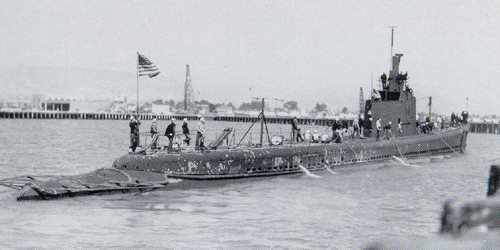
The facts regarding the USS Wahoo (SS-238) January 1943 attack on the Japanese troop ship Buyo Maru remain highly controversial.
The Wahoo, under the command of Lt. Commander Dudley W. “Mush” Morton, attacked the Buyo Maru, one of the four ships in a Japanese troop convoy off the northern coast of New Guinea. After ~1,000 Japanese troops abandoned shop in 20 wooden lifeboats, torpedoes from the the Wahoo sank the Buyo Maru.
Dependent on where they were located during the action, crew members reported different accounts of of the actual events that followed. Surfacing amidst the lifeboats, the Wahoo reportedly received small arms fire as it approached the scene. In response, Lt. Cdr. Morton ordered the Wahoo’s 4”/50 cal. deck gun and .50 caliber machine guns to open fire on the lifeboats. A total of 282 men were killed.
Morton later stated his intention was to destroy the lifeboats so the Japanese troops could not reach friendly territory. After review by the chain of command, Morton received a glowing endorsement from Commander Submarines Pacific, Admiral Charles Lockwood.
Morton claimed killing “most of the troops” from the Buyo Maru, grossly overestimating the number at 1,500-6,000. Sadly, it was later determined that 491 Allied Indian P.O.W’s were also aboard the Buyo Maru and 195 of them were killed in the Wahoo attack. The remainder of the ship’s 1,126 troops, P.O.W’s, and crew were rescued by the Japanese. All told only 87 Japanese were killed.
The USS Wahoo was sunk by Japanese aircraft in October 1943 while returning home from a patrol in the Sea of Japan.
The post USS Wahoo Atrocity -1943 appeared first on Enemy in the Mirror.
May 16, 2016
All Out For Victory – 1943
After the entry of the U S. into WWII, many manufacturers such as the Firestone Tire and Rubber Company de-emphasized the sale of their products and services in their advertising campaigns in favor of demonstrating their support the war effort. Advertising was presented as an aid to help the public understand why some products were no longer available for purchase because the manufacturer was now producing war material (e.g., new washing machines were on hold as the manufacturer turned to producing war machinery).

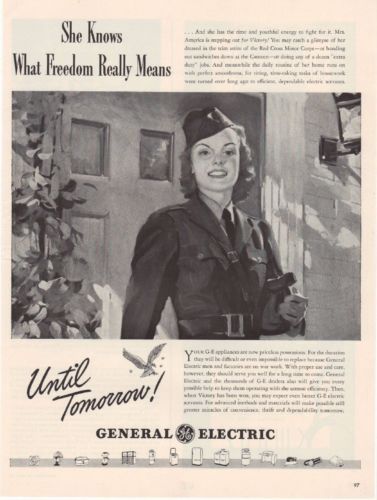
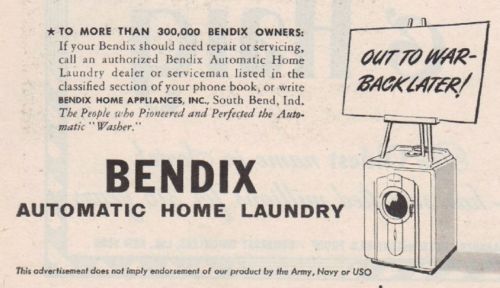













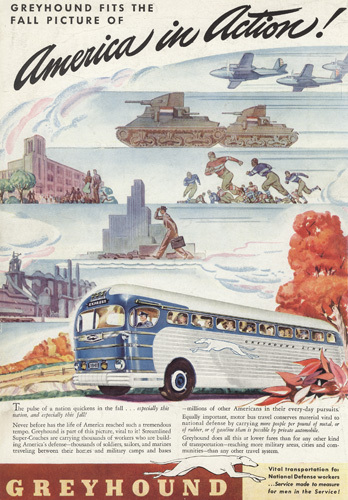

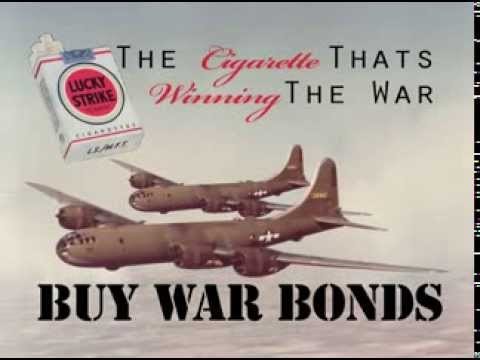




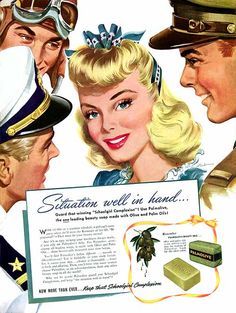

The post All Out For Victory – 1943 appeared first on Enemy in the Mirror.
Enemy in the Mirror
I began by posting events around the turn This website www.enemyinmirror.com explores the consciousness, diplomacy, emotion, prejudice and psychology of 20th Century America and her enemies in wartime.
I began by posting events around the turn of the 20th century as I was researching my first novel about the Pacific War. I continued through WWII for my second novel about the Battle of the Atlantic. Now I am beginning to look at the Cold War as I gather information for my next novel about the Korean War. ...more
- Mark Scott Smith's profile
- 7 followers



